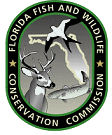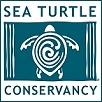   |
During late July and August 1999, researcher Barbara Schroeder (National Marine Fisheries Service) and Allen Foley (Florida Department of Environmental Protection), with the assistance of Meg Lamont (a University of Florida graduate student) and her nesting beach survey crew, five transmitters were attached to turtles that nested along the Gulf coast of the Florida panhandle at Cape San Blas, Gulf County. With the assistance of John McCarthy and the Manasota Key Sea Turtle Patrol, four transmitters were attached to turtles that nested along the soutwest Florida coast just south of Venice, Sarasota County.
This research is aimed at locating the migratory routes and principle foraging habitat(s) of loggerheads that nest on Florida’s Gulf coast. Understanding migratory routes and locating foraging grounds will allow biologists to determine what threats exist and what measures are needed to protect the turtles and their habitats away from the nesting beach. This information will be of vital importance to the NOAA/National Marine Fisheries Service, the Florida Fish and Wildlife Conservation Commission, and to the U.S. Fish and Wildlife Service in determining where efforts (including international efforts) should be focused to ensure recovery of these threatened species.
Similar tracking experiments conducted by Barbara Schroeder and Allen Foley on loggerhead turtles from the Florida Gulf and Atlantic coasts resulted in here-to-fore unknown information on routes of travel away from the nesting beach. See 1999 Florida Atlantic Coast Loggerhead Turtle Tracking Project. Similarly, Schroeder’s research on green turtles during the past five years yielded exciting new information about where Florida green turtles travel after nesting on Florida’s east coast. See Results of 1994 & 1995 Migration-Tracking of Florida Green Turtles, 1996 Migration Tracking Project and 1997 Green Turtle Tracking Project, for more details.
For more information on sea turtles, check out the Sea Turtles Information section of our website.
Funding for the 1999 Florida Gulf Coast Turtle Satellite Tracking Project was provided by the NOAA/National Marine Fisheries Service with assistance from the Florida Fish and Wildlife Conservation Commission. Maps created by the Sea Turtle Survival League.
Click on the turtle’s name to see a map of its movements.
GEM – Gem is a female loggerhead that was first tagged on June 19, 1999 when she was discovered nesting on Cape San Blas, FL (north Gulf coast, Gulf County) by Meg Lamont (a University of Florida graduate student) and her nesting beach survey crew. On June 30th, Gem was again encountered nesting on Cape San Blas, and a satellite tag was applied after she finished nesting. Gem measured 88.9 cm in carapace (shell) length.
ISABELLA – Isabella is a female loggerhead that was first tagged on June 30, 1999 when she was discovered nesting on Cape San Blas, FL (north Gulf coast, Gulf County) by Meg Lamont (a University of Florida graduate student) and her nesting beach survey crew. A satellite tag was applied that same night after she finished nesting. Isabella measured 96.0 cm in carapace (shell) length.
LARETTA – Laretta is a female loggerhead that was first tagged on June 18, 1999 when she was discovered nesting on Cape San Blas, FL (north Gulf coast, Gulf County) by Meg Lamont (a University of Florida graduate student) and her nesting beach survey crew. On July 1st, Laretta was again encountered nesting on Cape San Blas, and a satellite tag was applied after she finished nesting. Laretta measured 87.7 cm in carapace (shell) length.
Funding for the 1999 Florida Atlantic Coast Turtle Satellite Tracking Project was provided by the U.S. Fish and Wildlife Service and the NOAA/National Marine Fisheries Service. Maps created by the Sea Turtle Survival League.